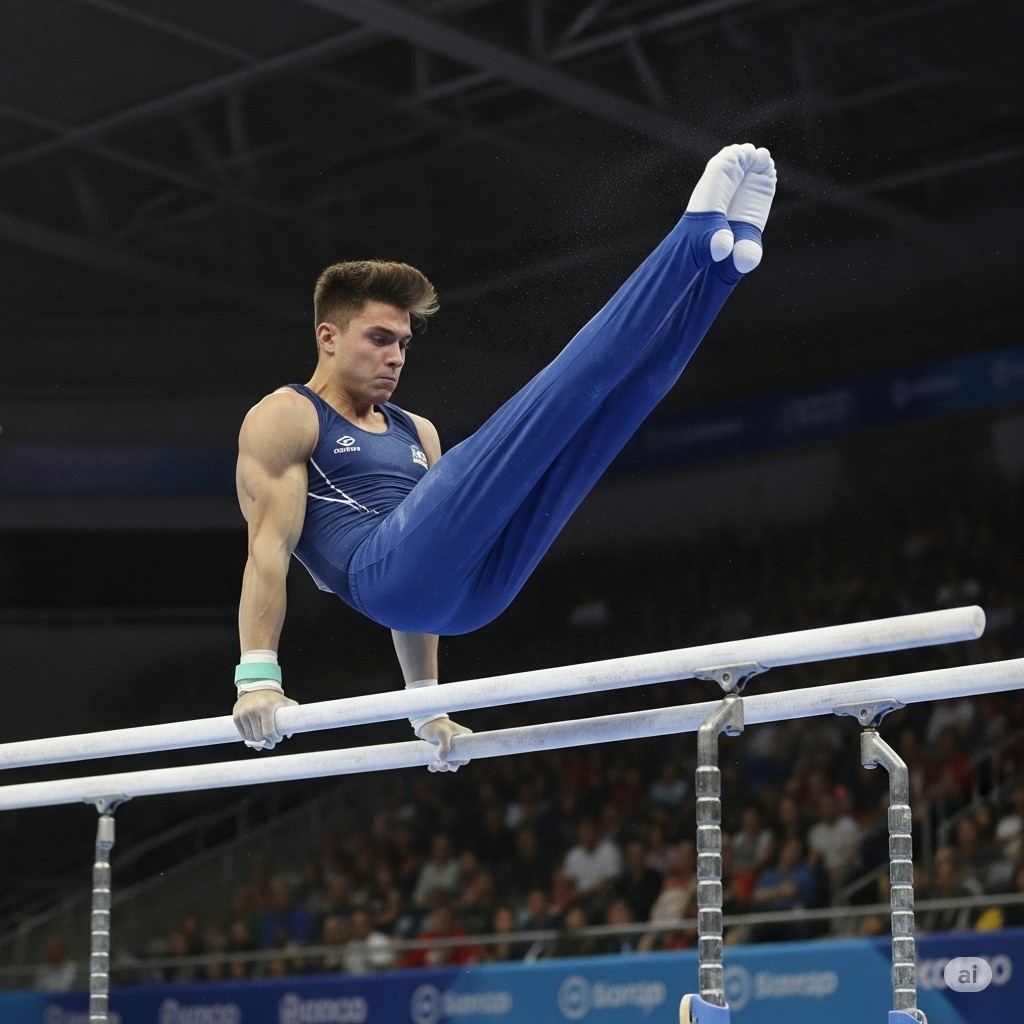
The World of Parallel Bars: A Deep Dive into the Sport
Parallel Bars is a captivating and challenging discipline within artistic gymnastics. It combines strength, agility, and finesse, making it a favorite among gymnastics enthusiasts. This blog will delve into the rich history, global popularity, amateur participation, professional leagues, and the sport’s social and political significance. Additionally, the rules of Parallel Bars will be explored to provide a comprehensive understanding.
The Origin and History of Parallel Bars
The roots of Parallel Bars can be traced back to the early 19th century. Friedrich Ludwig Jahn, often called the “father of modern gymnastics,” introduced the apparatus in Germany. Jahn’s goal was to develop physical strength and discipline among youth through structured exercises. By 1811, Parallel Bars became a staple in gymnastics training programs across Europe.
In 1896, the sport gained international recognition when it was included in the first modern Olympic Games in Athens. Since then, it has remained a core component of artistic gymnastics competitions. Over the years, athletes have continuously pushed the boundaries of creativity and technical difficulty, transforming the event into a spectacular display of athleticism and artistry.
Global Popularity and Participation
Parallel Bars enjoys immense popularity worldwide, particularly in countries with a strong gymnastics tradition. Nations such as China, Russia, Japan, and the United States dominate the sport. These countries invest heavily in training programs, facilities, and coaching staff to nurture talent.
In Europe, Germany, Switzerland, and Romania are known for their contributions to Parallel Bars. Asian countries like South Korea and India have also shown increasing interest, with budding gymnasts making their mark on the global stage. Meanwhile, Brazil and Canada represent the Americas with competitive performances in international events.
Parallel Bars is prominently featured in the Summer Olympics, World Championships, and regional competitions like the Asian Games and European Gymnastics Championships. These events attract large audiences, further boosting the sport’s visibility and appeal.
Amateur Participation: Youth and Schools
Parallel Bars serves as a foundational element in gymnastics programs for children and teenagers. Youth gymnastics clubs worldwide introduce participants to the apparatus early in their training. These programs emphasize basic skills such as swinging, handstands, and balance techniques. Coaches gradually introduce more complex movements as athletes develop strength and coordination.
Schools and community centers often host gymnastics classes to encourage physical activity. Many nations incorporate gymnastics, including Parallel Bars, into their physical education curriculums. This widespread exposure helps young athletes discover their potential and fosters a love for the sport.
Local and regional competitions provide a platform for amateurs to showcase their abilities. These events often lead to opportunities for talented individuals to join elite training centers. Organizations such as USA Gymnastics and British Gymnastics play a significant role in identifying and supporting young talent.
Professional Leagues and Competitions
Professional leagues for Parallel Bars operate under the broader umbrella of artistic gymnastics. The FIG (Fédération Internationale de Gymnastique) governs the sport at the international level. It organizes prestigious events such as the World Artistic Gymnastics Championships and World Cup Series.
The Olympics remains the pinnacle of achievement for gymnasts specializing in Parallel Bars. Athletes dedicate years to perfecting their routines in pursuit of Olympic glory. Additionally, continental championships in Asia, Europe, and the Americas offer platforms for regional talent to shine.
In countries like Japan, Germany, and China, domestic leagues and national championships feature top gymnasts. These competitions help sustain interest in the sport between major international events. Professional gymnasts also participate in exhibitions and showcase events, which highlight the artistry and entertainment aspects of Parallel Bars.
Social and Political Significance
Parallel Bars holds significant social and political value, transcending its role as a competitive sport. It symbolizes discipline, resilience, and the pursuit of excellence. Gymnasts often serve as role models, inspiring others to overcome challenges and achieve their goals.
The sport has also been a platform for international diplomacy and cultural exchange. During the Cold War, gymnastics competitions, including Parallel Bars, highlighted the prowess of rival nations. These events fostered mutual respect and admiration among athletes, despite political tensions.
Socially, Parallel Bars promotes inclusivity and gender equality. While traditionally associated with male gymnasts, the sport has evolved to include female athletes. This shift underscores the importance of breaking stereotypes and celebrating talent regardless of gender.
Rules of Parallel Bars
Parallel Bars routines involve a series of swinging, balancing, and flight elements performed on two horizontal bars. The FIG Code of Points provides detailed guidelines for judging these routines. Key rules include:
- Routine Duration: Routines typically last between 30 to 90 seconds. Exceeding the time limit results in penalties.
- Start and End: Athletes must mount and dismount the bars with controlled movements. Flawless execution of these elements earns higher scores.
- Difficulty and Execution: Judges evaluate routines based on the difficulty of skills and the precision of execution. Points are deducted for errors such as loss of balance, incorrect hand placement, or incomplete rotations.
- Composition Requirements: Routines must include specific elements, such as swings, strength holds, and transitions between bars. Omitting required elements results in deductions.
- Safety Measures: Gymnasts must use proper equipment, including grips and padded landing mats, to minimize injury risk. Spotters are also present during practice sessions.
Mastering the rules is essential for athletes to deliver high-scoring performances. Coaches play a crucial role in designing routines that meet these criteria while showcasing the gymnast’s strengths.
Conclusion
Parallel Bars is a testament to the beauty and power of human movement. Its rich history, global appeal, and influence on amateur and professional levels make it a cornerstone of artistic gymnastics. Beyond competition, the sport’s social and political significance highlights its ability to inspire and unite people worldwide.
By understanding the rules and appreciating the dedication of athletes, one can truly value the artistry of Parallel Bars. Whether in a local gym or on the world stage, this sport continues to captivate audiences and shape the future of gymnastics.




